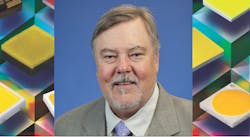Myriad germicidal UV developments change the SSL name game (MAGAZINE)
What’s in a name or a label, anyway? Well, in a technology magazine, consistent usage of labels, brands, descriptors, metrics — style, if you will — contribute positively to readers correctly digesting content. Mostly we get our style usage right, and we occasionally have been wrong. And sometimes the phraseology we have adopted just gets run over by new technology developments such as in germicidal ultraviolet (UV) applications. I’ll explain the changing disinfection landscape relative to SARS-CoV-2 and the impact on our descriptions of it.
While the SARS-CoV-2 coronavirus that causes COVID-19 is fairly new, disinfection using electromagnetic energy is not. We’ve covered deactivation of pathogens going back probably a decade. But COVID-19 has fundamentally changed thought processes, usage models, and yes, phraseology.
We first wrote about using UV-C-band (100–280-nm) LEDs to kill pathogens. We’ve since learned that “kill” isn’t what happens but rather deactivation is the desired outcome (see our Last Word from this issue for more details). The early coverage was more wishful thinking than practical due to the cost and relatively low power output of UV-C LEDs. But there was obvious great market potential, for instance, in instantaneous water disinfection.
Then we learned about the use of violet and later UV-A-band (315–400-nm) energy to deactivate pathogens. The longer-wavelength energy uses a different mechanism to deactivate a pathogen relative to the shorter-wavelength UV-C, and the longer-wavelength energy requires a much longer duration of exposure to work its magic.
I have no way to exactly trace the chronology, but I think it was Kenall that I first experienced using the phrase “continuous disinfection” to describe the operation of its violet technology. The violet energy could be used safely while people were in a space, and the usage model was 24/7 operation to constantly fight pathogens in places like locker rooms or hospital rooms. The word “continuous” was adopted as a differentiator to UV-C offering instantaneous disinfection. And so we at the magazine began to use those phrases to describe the related but different technologies and applications.
Recently, however, GE Current announced a UV-C-based, round puck-like, ceiling-mounted product specifically targeted at SARS-CoV-2. But Current also suggests that its product be used continuously, and even has a new brand — 365DisInFx — that implies 365-days-per-year usage.
The new Current product is designed to emit low levels of UV-C irradiance so that it can be safely used while people occupy a space. The low dosage means that deactivation doesn’t happen instantaneously, although it may not take as long as the UV-A or violet technology. Current’s initial product will target deactivation of SARS-CoV-2 in three hours. The longer disinfection time isn’t perfect, yet it still makes a space safer by some measure. So we have another class of system — low-dosage UV-C. And by the way, that type of system would only be enabled by LEDs as opposed to legacy lamps.
So we need new descriptors. “Instantaneous” and “continuous” just are not going to work. There is also the concern that the violet and UV-A systems work on bacteria and not on viruses. In reality, they probably work on viruses, but the time it takes for deactivation may limit the practical use. We need to describe the systems with no ambiguity based on technology used or application scenario. Any ideas?
Maury Wright
EDITOR
For up-to-the-minute LED and SSL updates, why not follow us on Twitter? You’ll find curated content and commentary, as well as information on industry events, webcasts, and surveys on our LinkedIn Company Page and our Facebook page.

Maury Wright | Editor in Chief
Maury Wright is an electronics engineer turned technology journalist, who has focused specifically on the LED & Lighting industry for the past decade. Wright first wrote for LEDs Magazine as a contractor in 2010, and took over as Editor-in-Chief in 2012. He has broad experience in technology areas ranging from microprocessors to digital media to wireless networks that he gained over 30 years in the trade press. Wright has experience running global editorial operations, such as during his tenure as worldwide editorial director of EDN Magazine, and has been instrumental in launching publication websites going back to the earliest days of the Internet. Wright has won numerous industry awards, including multiple ASBPE national awards for B2B journalism excellence, and has received finalist recognition for LEDs Magazine in the FOLIO Eddie Awards. He received a BS in electrical engineering from Auburn University.





